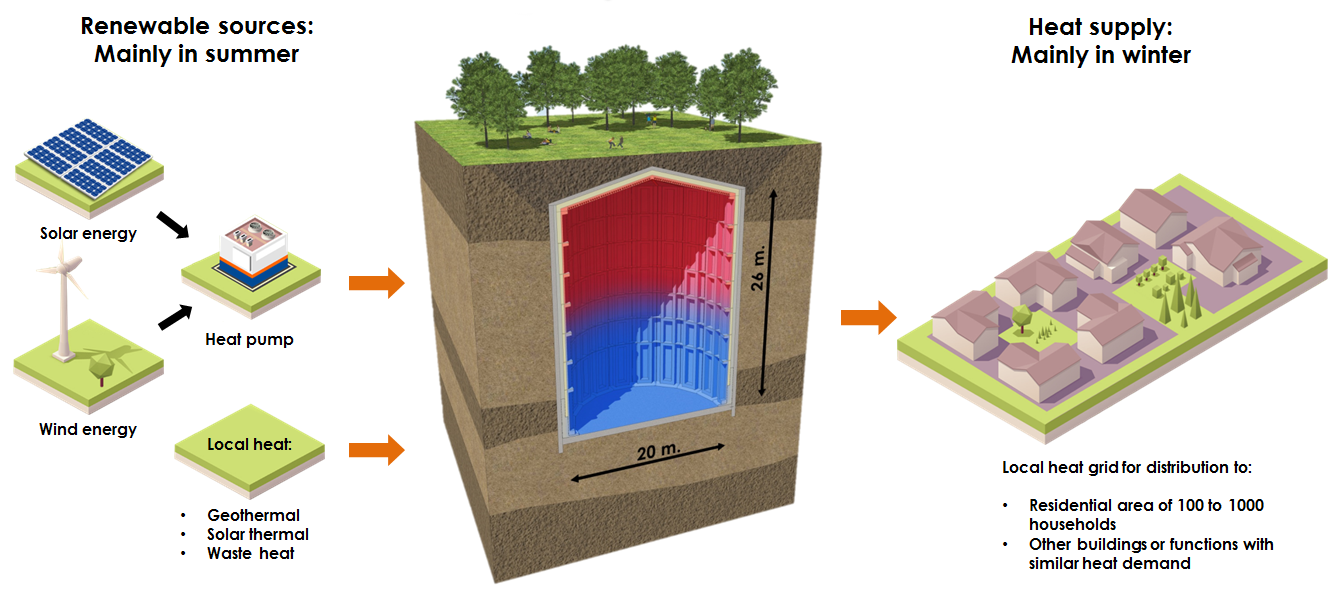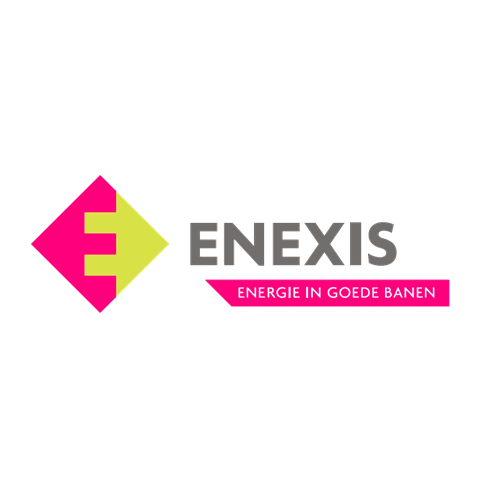Demo 1 – Centralized Heat to Power Solution (Netherlands)
Ecovat BV has constructed a large thermal storage facility to heat office buildings and, in the future, domestic buildings in Uden, the Netherlands.
The basic purpose is to convert power to heat (made by water-water, air-water heat pumps and thermal resistors) when there is excess (so cheap) energy and use this heat later when it is needed. The facility is designed to store heat over 6 months with an efficiency of above 90%. This is a 1,500 m3 (88,000 kWh) system, connected to a single office building. It is able to store energy over a season and converts the surplus of renewables to high quality heat on the one hand. On the other hand, it can supply heat to up to 1,000 houses (with a 89,000 m3 Ecovat system).
This prototype is meant for demonstration purposes and to test the functionality. Already in this scaled prototype, the boundaries of the energy distribution grid have been encountered. As electrical loads, a number of heaters, heat pumps and CHPs are connected.

Expected Results & Benefits

Maximizing system level excess power absorption in a local grid-secure manner:The final outcome of this first field test is to demonstrate a safe, reliable and grid secure dynamic solution, in which the Ecovat excess power absorption capability is maximized with respect for the local grid constraints by a coordinated management of the other flexibility resources on the same line.
Offering RES curtailment avoiding balancing services with the Ecovat installation in a local grid secure manner:Ecovat BV collaborates with a Balance Responsible Party (BRP), with an increasing share of wind-turbine portfolio. One of the main challenges for this BRP is to deal with negative imbalance prices. In the Netherlands, the imbalance prices are negative for 5 to 10% of the time. Currently, BRPs curtail (switches off) the wind-turbines during these moments. The idea of this collaboration is to fill the Ecovat with CO2 neutral wind energy from these wind-turbines when prices are negative or very low. Of course, the Ecovat alone is not able to absorb all the generated wind power, but it is almost able to consume only redundant renewable energy.



